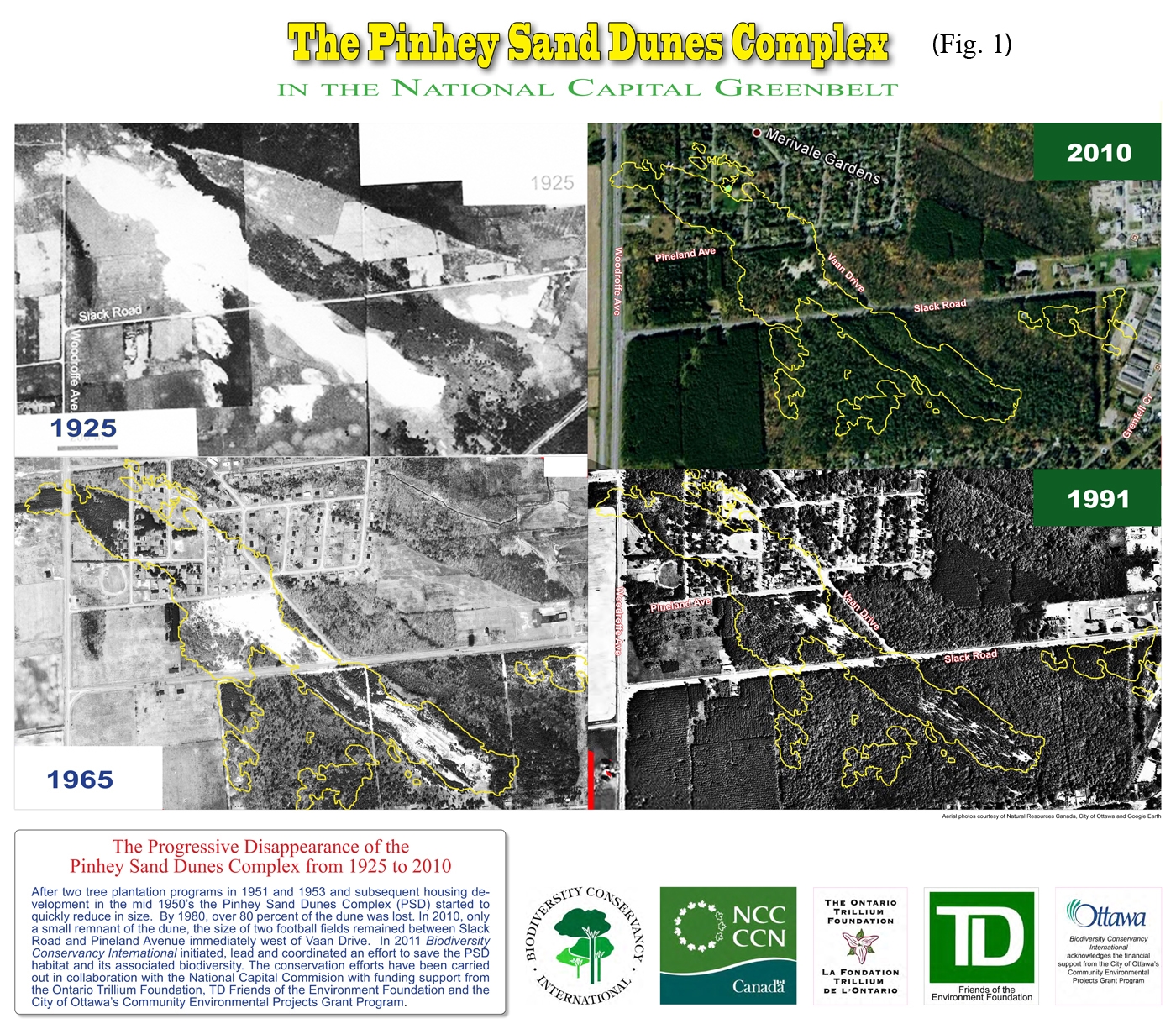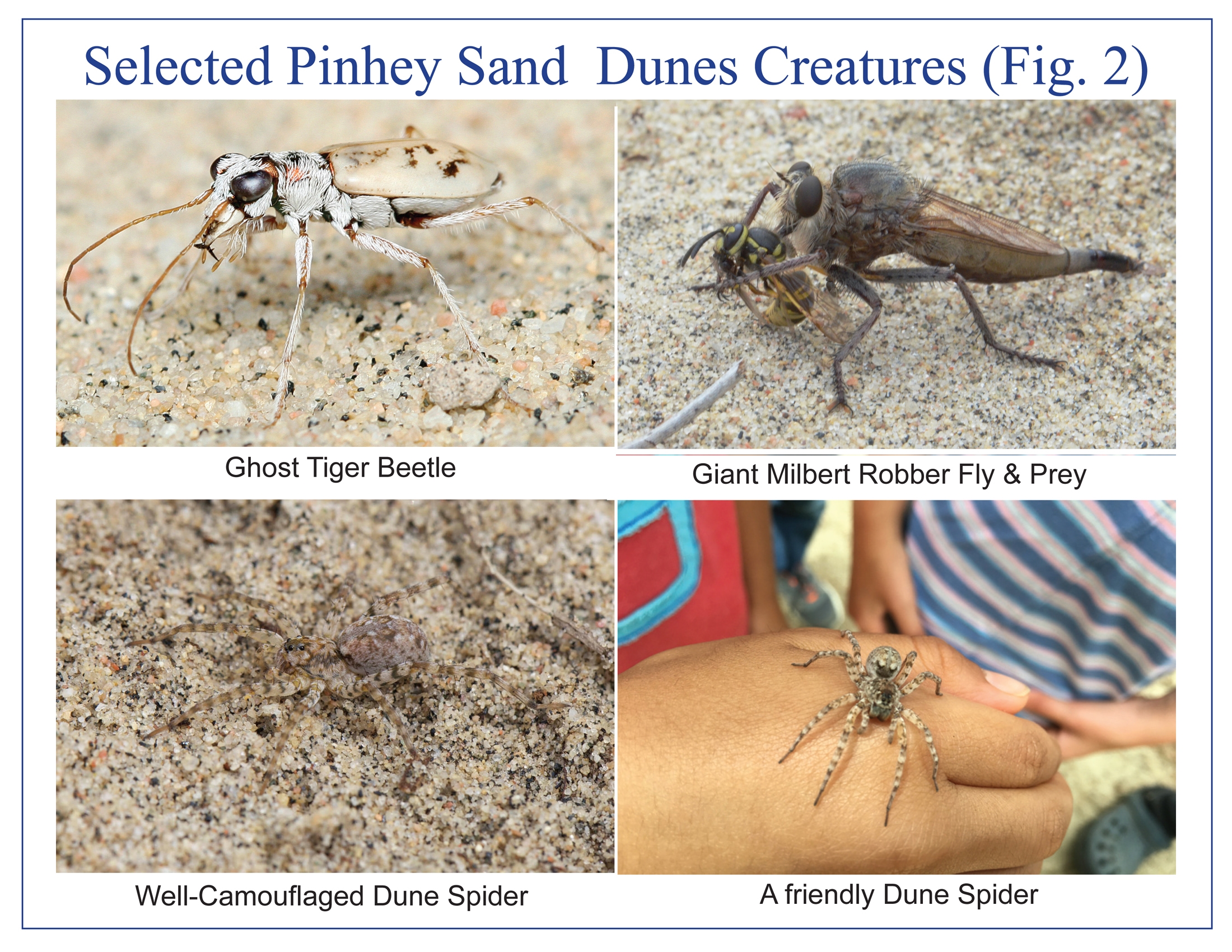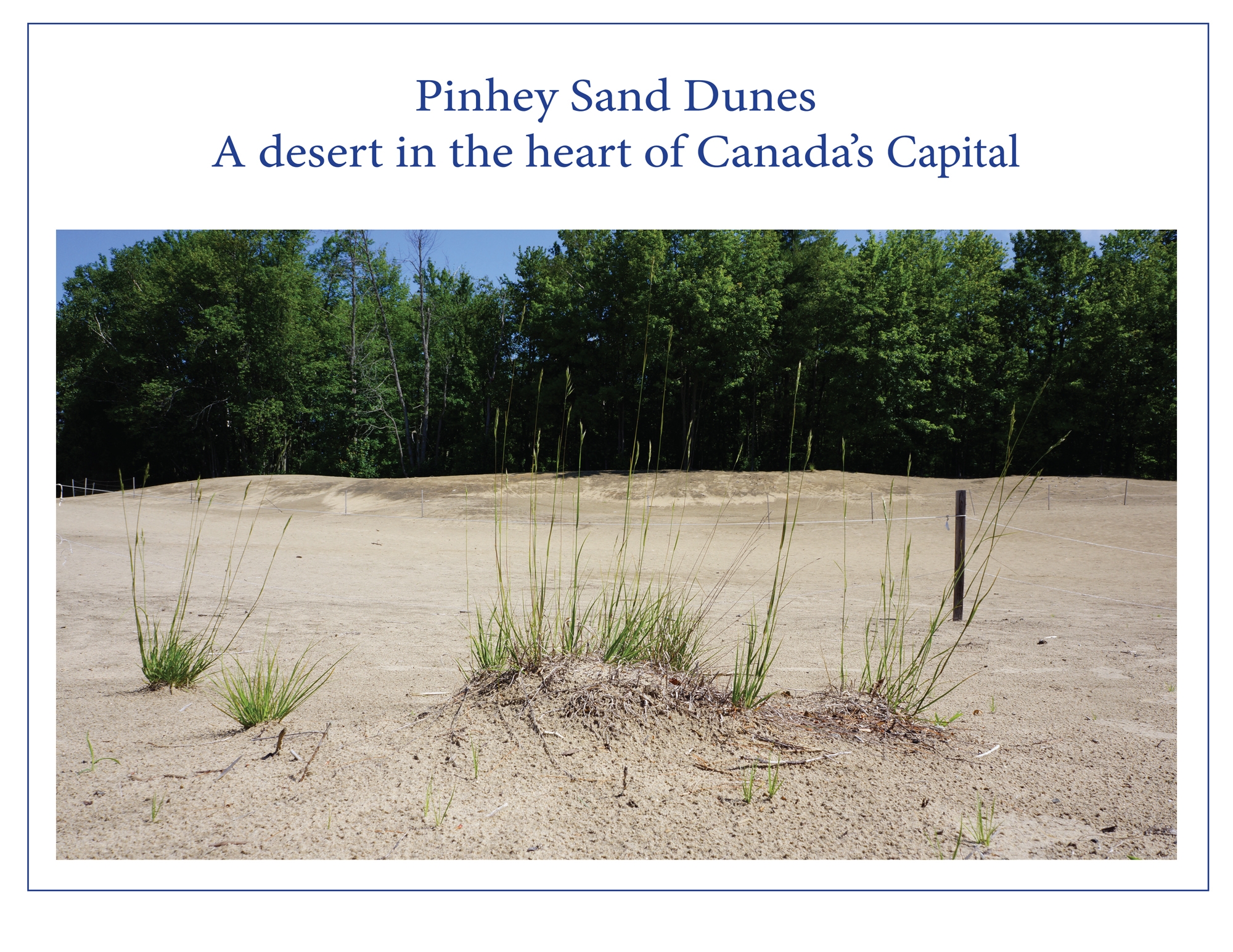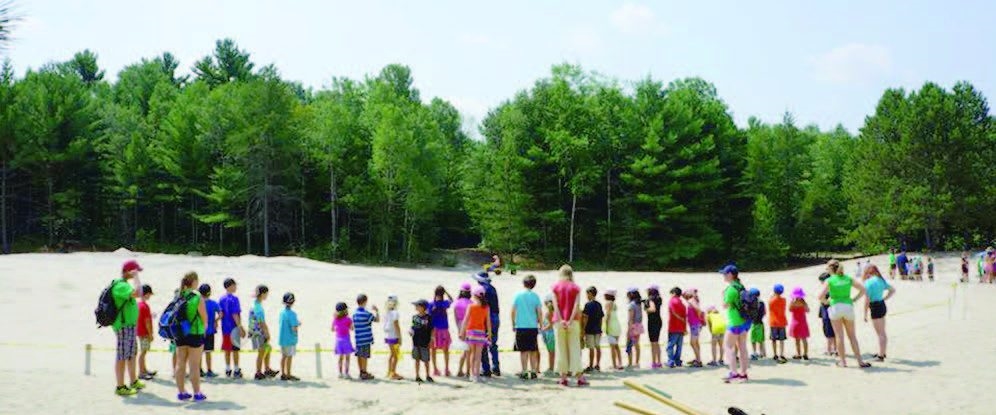





https://www.youtube.com/watch?v=Hs4LEhnhmB8
The Pinhey Sand Dunes System (PSDS) is an extensive inland dune system. It is an end product of the last glacial period and Champlain Sea. In 1925 this dune system was still open and intact (Fig.1), spreading over 2 km long from the Nepean Sportsplex on Woodroffe Avenue to the railway line in the southeast adjacent to Grenfell Crescent, Nepean. Reforestation in the 1950s and subsequent housing development in the early 1960s on the northern half of the system have drastically reduced the size of PSDS, significantly diminished the wind velocity allowing non dune vegetation to invade the already reduced dune area. In 2011 PSDS nearly disappeared, endangering the existence of a community of dune dwelling organisms that have adapted to live there over thousands of years in the harsh dune environment with its frequent strong winds, constant sand blasts and extreme temperatures (60-70C) in the summer.
The restored areas of the PSDS are located in the following locations: Area 1 (50 m North of Slack Road, immediately west of Vaan Drive and south of Pineland Avenue; Area 2 (400 m east of intersection Slack Road & Vaan Drive, 20 m south of Slack Road ); Area 3 (50 m east of the intersection Slack Road & Vaan Drive and 100 m south of Slack Road. These restored parts of the PSDS are: (i) to provide vital living space for hundreds of dune dwelling insects, spiders and other invertebrates, and a number of plant species, many of which are threatened with extirpation; (ii) to diversify the natural habitats in the National Capital Greenbelt; (iii) to create an onsite biodiversity-ecology-geology classroom for the youth (from elementary school to university students) and the general public; (iv) to provide large, open, scenic space, and a clean and healthy environment for leisure walk for people in neighbouring communities and the public; and (v) to bring back part of a 10,000 year old, unique natural, spectacular landscape to Canada’s Capital.
During May to October each year, Biodiversity Conservancy International (BCI) provides an extracurricular, on-site interactive educational program on Sand Dune Habitat, Biodiversity and Ecosystems to students of all ages. In 2016 nearly 1000 students and teachers from various schools across Ottawa-Carleton came to the Pinhey Sand Dunes participating in the program. This hands-on learning program has continued to increase in popularity. In 2017 requests to participate have been overwhelming. It is expected that over 1000 students, general public and senior citizens will come to the dunes this year.
Biodiversity of the PSDS is unique. The Ghost Tiger Beetle (Allipsoptera lepida) (Fig. 2) is a rare species continent wide. Within a radius of 200 km, it can be found only here in the PSD. Over 100 species of insects and spiders have been recorded in PSDS. Most favourite dune species to the students are shown in Fig. 2. BCI has also provided dune tours to the public on most Sunday mornings from May to August to raise awareness and appreciation to the PSDS and its ecosystems.